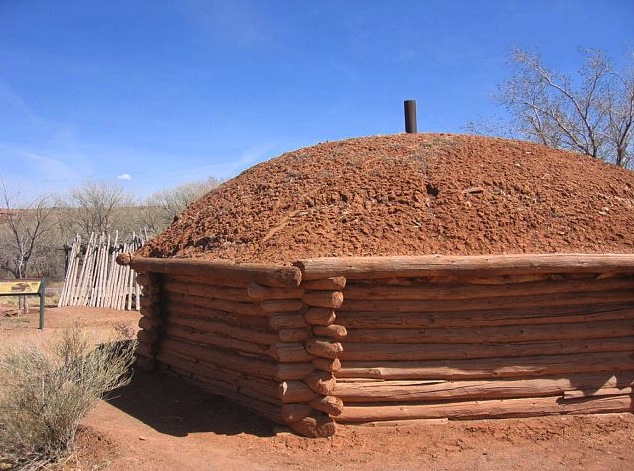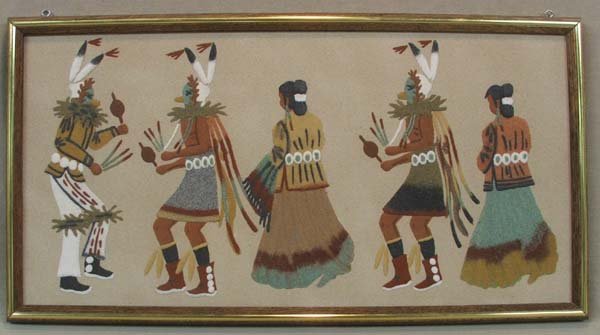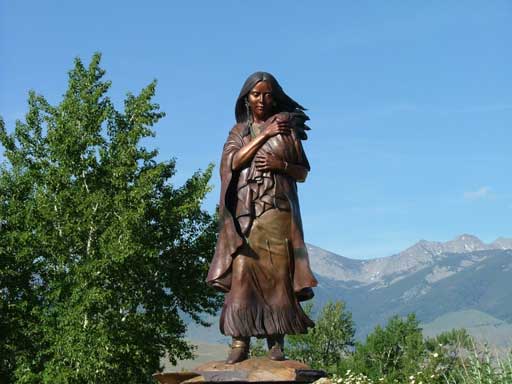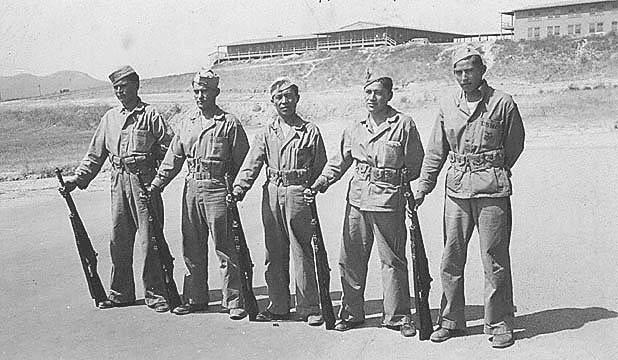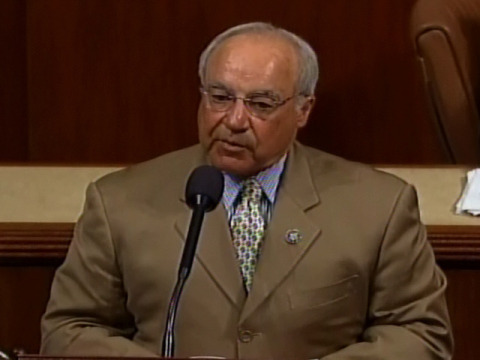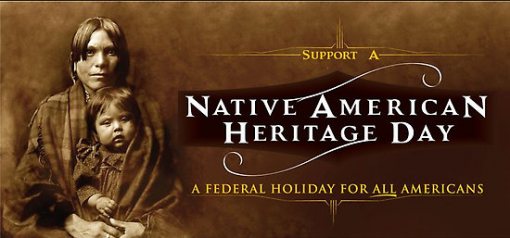Following Thanksgiving, Native America Heritage Day
Personal reflections on a long-awaited day and the spiritual and family rituals observed by First Americans
by: StuartH
Native American Heritage Day
Friday, the day after Thanksgiving
Most people aren't aware of this, but in June 2009, President Obama signed into law a joint resolution of the House and Senate, sponsored by Rep. Baca of California and Sen. Inouye of Hawaii, naming the Friday after Thanksgiving Native American Heritage Day, "to honor the achievements and contributions of Native Americans to the United States."
The general truth, that we little understand the implications of what we celebrate, and that we should become more aware of our history and how others view it, is very appropriate to carry in our thoughts on this supposedly contemplative occasion.
My family origins are with an ancestor who came over from England in 1680. Nearly a century later, a descendant of his fought in the American Revolution. My great grandfather learned a portable trade growing up in Litchfield, Connecticut, as a wheelwright, and made it all the way West--to Albion, NY. Despite the long history of my family in America, I largely am an expert in the ignorance of Mainstream America in this subject area, beyond the Disneyfied bubble many of us have lived in. I feel I should comment from my attempts to overcome this.
‘We Are One People! We Are One Spirit!’ produced and directed by Turtle, posted at YouTube by unseelieturtleSo, as a non-expert, how to get across some things about American Indian ways of life that enrich us? There are so many ways one might go about this. A list of things like corn, so much a staple of our diets that our bodies are nearly identical to corn in chemical analysis? Quinine? The insight into political process and governance that Benjamin Franklin and Thomas Jefferson gained from meeting and talking with councils of the Six Nations confederacy?
Given the spiritual and family nature of this holiday for many people, maybe it would be interesting to explore something most people might not consider.
Several years ago I was living on the main campus of the Navajo Nation's tribal college, in Tsaile, AZ (derived from the Navajo word for a place where water enters the canyon), at the head of Canyon de Chelly in a stunning setting on the flanks of the Chuska (Ch'osgai--white spruce) Mountains, high up at 7200 feet.
I thought I was going to a public lecture, but found myself in a large meeting convened on the Navajo Nation by many medicine men, tribal college leaders, tribal government and legal experts and others concerned about the issue of spreading water from sewage treatment onto the slopes of a sacred mountain. This was approved by the National Park Service under Bush. Fake snow for ski tourism on the mountain near Flagstaff.
The purpose was to review the legal strategy for opposing the Park Service action before the appellate court and possibly the Supreme Court on behalf of the Nation, and some fifteen other tribal entities as well.
‘Amazing Grace,’ sung in Cherokee by Walela, a Native American trio of singers founded in 1997 by sisters Rita and Priscilla Coolidge with the latter’s daughter, Laura Satterfield, as the third member. ‘Walela’ is Cherokee for hummingbird. This recording of “Amazing Grace’ is from the group’s self-titled debut album, released in 1997. For more information, visit the Walela website.Harry Walters, a well known expert on Navajo culture, a teacher at the college and a tribal elder, explained the difference between "Western" viewpoints on issues such as this and "Indian" ways of seeing it, thus to explore the problem of translating the issue into language useful in a courtroom.
I should mention that Dine' College was founded on the principle that Indian youth could best be prepared for a future as leaders for the Nation, and successful people in the larger culture, through an education that honors traditional Indian views of life, as well as the accreditation requirements for US colleges. The educational philosophy uses an ancient wisdom tradition description, Sa'a N'yae Bikeh Hozhon. It isn't translateable directly.
This is the sort of issue at the heart of the cultural divide between the two different traditions. Language is a real limitation when it really represents different ways of thinking.
Specific breaking down into atoms, molecules or logical bits that can be categorized is the "Western" gift to mankind. It creates science and the benefits derived therefrom. It also creates problems when people and cultures are subjected to compartmentalized thinking that allows them to be dismissed as less than human or irrelevant. This is the source of war and horrible legacies that we know all too well, unless we dismiss the truth of history as many do--also made possible by compartmentalized, limited, left brain thinking.
The more fluid, open and right brained intelligence welcomes more subjective experience as truth. Poetry and art are more congruent than, say chemistry. More comfort with ambiguity. Less comfort with regimentation.
Walters drew a line and a circle. More or less, straight line logic that sees things in terms of a continuum, such as a timeline or a process is one way of looking at the world, and a circle, where all things are seen as a gestalt with no beginning or end is another.
Cherokee Morning Song by Walela, from the group’s self-titled debut album.One might compare this to an Eastern, maybe Buddhist philosophy. But it goes further.
The wisdom to be found in American Indian philosophy cannot be separated from ancient experience of place. This is why land issues are so vastly crucial. Dine' people, especially in the very center of the Nation, have the fortune of living on land that direct ancestors walked going back at least into the fifteen hundreds. Maybe further back.
The reason that there is a dispute over the sacred mountain is that there is no distinction between the time of Creation--back then in ancient times--and now. The figures in the myths of origin, notably the Yei, are still alive and present within the four sacred mountains that define the Dine' world. These are deities. Peeing in the baptismal font, as it were, is not only disrespectful, but could harm balance on a profound level and cause a drift into negativity across the land, increasing criminal thinking, drug and alcohol abuse, and bad public leadership. Maintaining balance in the world is the essential issue.
One could talk about this in terms of String Theory. Time exists all in one place and we live in a dimension of it, not able to experience beyond what our senses are designed to process. We are limited beings who cannot take in more than a small amount of reality. We live in very limited ways. We need some kind of help with enlarging into our potential as individuals and as a society. What we seek, that we may lack, is proper balance. Calibrating balance is the larger work of consciousness leaders. The ideal is what is meant by the word, "beauty."
The insight that we live in a landscape that we ought to open ourselves to having reverence for, is a valuable insight. Heedless existence that has no respect for others is completely selfish and allows unchecked consumption of everything without respect for any consequences in the future is the opposite of balance, of beauty.
Navajo families gather in the fall and winter for Yei Bi Chei ceremonies. These may be open to the public, with hand painted signs visible along roads pointing to them. Traditionally, they last for nine days. People do take off work, telling supervisors that they must go to a family ceremony and this is acceptable, with compromises. There are now short form ceremonies lasting maybe only a day or so. But there are still very lengthy observances among the most traditional folks.
I attended a Christmas Eve Yei Bi Che a few years ago, up the road a few miles at Lukachukai, as it happens, an historic center of ceremonialism.
The Hogan, the traditional Navajo home, located next to Canyon de Chelly Visitor Center on the Colorado Plateau. The Navajo culture is full of symbolism, much of it emphasizing balance. The Hogan is no exception. The dome roof symbolizes the sky, the floor the earth, and the word Hogan translates in Navajo as ‘place home.’ The Navajo consider their home, the Hogan, to represent the earth. ‘A hogan is more than a shelter. To build a hogan is to make sense of the world, to live in harmony with the cycles and forces affecting all life.’The elaborate ceremony involved a specially built ceremonial hogan (an eight-sided log house) a lighted area out front, four ceremonial bonfires in a line on either side of a dance runway leading out into the sagebrush, and a large area for parking in an adjacent field. The medicine man conducting this performs a long series of complex songs that are the equivalent of a libretto for a long opera, and executes sand paintings and other rituals in private, in the hogan. He also manages and oversees everything so it is all done right.
A line of dancers comes in from the field, approaching the patient, seated in front of the hogan. At night, the area between the bonfires is lit, and the dancers enter from complete darkness. Out here, there are no city lights. No lights at all. Only stars, which are bright and close enough to almost touch in the high altitude air far from traffic or smokestacks. It was cold. Fifteen degrees. No one in the large crowd was complaining about it, so I didn't remark on it either. But I did get some hot chocolate from the guy in the trailer with the fry bread, Navajo tacos (mutton in fry bread) and coffee.
I contemplated, among other things, the license plates on about a hundred pickup trucks and cars, some idling with people inside warming up. When the call goes out, family gathers as they might for a wedding, driving in from everywhere imaginable.
A Navajo sand painting depicting Yei Bi Chi dancersNavajos are unified by a strong sense of family, clan, community. It is a healthy support system. For those who participate in this, resources can be shared that might help get someone through a distant college, create a great network of caregivers for children, even capital for business investment.
The line of dancers, dressed in white body paint and the unique masks representing the Yei, move through the ritual in stages, calling out in the strange hooting that evokes supernatural utterance. At some point, the dancers may be "possessed" (a western term that will have to do) by the actual Yei who enter them and bring healings and blessings. This is one reason so many people are so dedicated to dropping what they are doing and driving however many miles they have to in order to make it.
In "The Web of Life" Fritjof Capra points out the work of physicist Ilya Prigogine, who won a Nobel Prize for postulating systems theory. In this "New Physics" everything is connected to everything, in a giant web, and not in straight line sequences. The World Wide Web is an example. The Gaia system is another. I guess one could say String Theory extends this.
The line of Yei Bi Chi dancers, dressed in white body paint and the unique masks representing the Yei, move through the ritual in stages, calling out in the strange hooting that evokes supernatural utterance.The first Europeans to come to these shores, like the Pilgrims, did not understand ecology. (Anybody talking about String Theory back then would have been accused of blasphemy, or worse.) They believed in Man's Dominion over Creation. A sense of reverence for all things, seen or not seen, understood or not understood, a sense that man does not have the right to dominate but is an equal part of the whole web of life is an essential indigenous wisdom. This is ancient human heritage for all cultures, but it has been a lost wisdom through the European Christian era, with its war on the indigenous world of Europe, brought here by the settlers.
Perhaps one of the great gifts of the meeting of the "Western" and Indigenous minds can still be a rediscovery of that deeply ancient wisdom which might be relevant to our future survival as Homo Sapiens.
Walela in concert, ‘I Have No Indian Name,’ from the group’s second album, Unbearable Love (2000)Last Thanksgiving, or around then, we had a dinner guest from Lukachukai, a graduate faculty member in the education department who had lived for some years in San Francisco and was on his way to an Ivy League university to do a lecture. I remember him saying, "We have no wisdom to share with anyone. Look at us. We are a devastated people. We live in poverty. Look at the alcohol, the domestic violence, people leaving the reservation for jobs a long way away."
You can certainly see a lot of cultural devastation and the history is full of causes for grieving. But on deep reflection, I believe that if the core of indigenous experience is ever lost, all mankind will suffer from that in ways we may never grasp. I prefer to take what opportunities there might be, to honor what wisdom I might be able to comprehend. That isn't an easy process, and yes, it is full of contradictions.
A line came to me for a poem once: "we will be shown what we can see." Wisdom begins with being fully open to the idea that we may not know everything or understand everything, but we might do better at that if we try, in time.
What I am saying is that the differences between perspectives have in the past led to killing and huge conflict. We should contemplate, instead, the ways that we can learn to open our minds to new dimensions of understanding and gain new ground in the process. That is something to consider and give thanks over--for the future.
Hozho Nahastle
Hozho Nahastle
Hozho Nahastle
Hozho Nahastle (May there be Beauty)More on the Navajo sacred mountains by Wilson Aronilth, a medicine man and teacher at Dine' College: http://earthmath.kennesaw.edu/main_site/RSI_studies/FoundationoftheSacredMountains.htm
Posted at Native American Netroots, Nov. 22, 2009***
A Day To Honor Native Americans
‘We must never take for granted the very first inhabitants of this continent--Native Americans, and their many contributions that have greatly enriched the United States’
By Rep. Joe Baca
American families gather together on the fourth Thursday of every November to celebrate Thanksgiving in remembrance of a feast hosted by the Wampanoag Native Americans for the Pilgrims at Plymouth in 1621. While we always remember the feast of Thanksgiving, we seldom pay homage to the Wampanoag hosts or recount what happened to them afterward.
By the time the Jamestown colony was founded in Virginia in 1607, the most accurate estimates are there were substantially more than 30 million Native Americans thriving in numerous tribes and cultures from the North American shores of Alaska to the tip of Cape Horn in South America. Unfortunately, the treatment of Native Americans over the next 300 years is one of the darkest chapters in American history.
Sacagawea, a Shoshone Indian who guided and acted as interpreter and negotiator for Meriwether Lewis and William Clark on their exploratory expedition. She traveled with them from North Dakota to the Oregon coast and back. This statue of her has been erected in Salmon, Idaho. Photo by Klaus Brink.It wasn't until the 20th century that America began to right many of the wrongs committed against our land's original inhabitants, and the first proposals were made for a day to honor Native Americans. Red Fox James, a member of the Blackfoot tribe, rode horseback from state to state in 1914 to gain support for a day of tribute. In 1915 Dr. Arthur C. Parker, a member of the Seneca tribe, persuaded the Boy Scouts of America to designate a day of recognition for Native Americans.
New York became the first state to observe an American Indian Day in 1916 and many other states have followed along through the years and designated a day to honor Native Americans. Congress granted U.S. citizenship to all Native Americans in 1924.
As a California State Assemblyman in 1998, I introduced legislation which established the fourth Friday of September as Native American Day in California. Last year, Congress passed legislation I introduced to establish a national Native American Heritage Day for 2008. This year, I again introduced legislation, H. J. Res. 40, to establish a Native American Heritage Day in 2009. I am proud to say that this bill passed both chambers of Congress and was signed into law by President Obama.
The bill encourages all Americans to observe, through appropriate ceremonies and activities, the day after Thanksgiving as Native American Heritage Day. It also encourages public elementary and secondary schools to enhance student understanding of Native Americans by providing classroom instruction focusing on their history and achievements. In conjunction with Native American Heritage Day, President Obama issued a Presidential proclamation marking November 2009 as National Native American Heritage Month, and calling for all Americans to recognize Friday, November 27 as Native American Heritage Day. The President also hosted the first ever Tribal Leaders Summit at the White House.
Navajo codetalkers created and memorized a code based on the Navajo language that helped the Marines win the Pacific campaign in World War IIThroughout history Native Americans have made significant contributions to our nation, our society, and our culture. The Constitutional separation of powers of our government was based on the structure of the Iroquois Nation. As an ambassador of peace, Sacajawea guided Lewis and Clark on their exploration across the west to the Pacific coast.
Hopi, Choctaw, Comanche, Kiowa, Winnebago, Seminole, Navajo and Cherokee used their languages as secret codes to protect American forces in several wars. Navajo "codetalkers" created and memorized a code based on the Navajo language which helped the Marines win the Pacific campaign in World War II.
Native Americans continue to live according to their own traditions and cultures and are making greater contributions than ever before. More than 30 tribal colleges across the country are educating future accountants, doctors, lawyers, health care workers, educators, policymakers, and political leaders.
Amid the Thanksgiving dinners, football, and shopping this week, lets take some time to recognize Native American Heritage Day. We must never take for granted the very first inhabitants of this continent--Native Americans, and their many contributions that have greatly enriched the United States.
Rep. Joe Baca represents the 43rd U.S. Congressional District of California. He is the primary sponsor of the bill which established Native American Heritage Day 2009. This blog was originally published at Huffington Post, November 24, 2009
Founder/Publisher/Editor: David McGee
Contributing Editors: Billy Altman, Laura Fissinger, Christopher Hill, Derk Richardson
Logo Design: John Mendelsohn (www.johnmendelsohn.com)
Website Design: Kieran McGee (www.kieranmcgee.com)
Staff Photographers: Audrey Harrod (Louisville, KY; www.flickr.com/audreyharrod), Alicia Zappier (New York)
E-mail: thebluegrassspecial@gmail.com
Mailing Address: David McGee, 201 W. 85 St.—5B, New York, NY 10024



